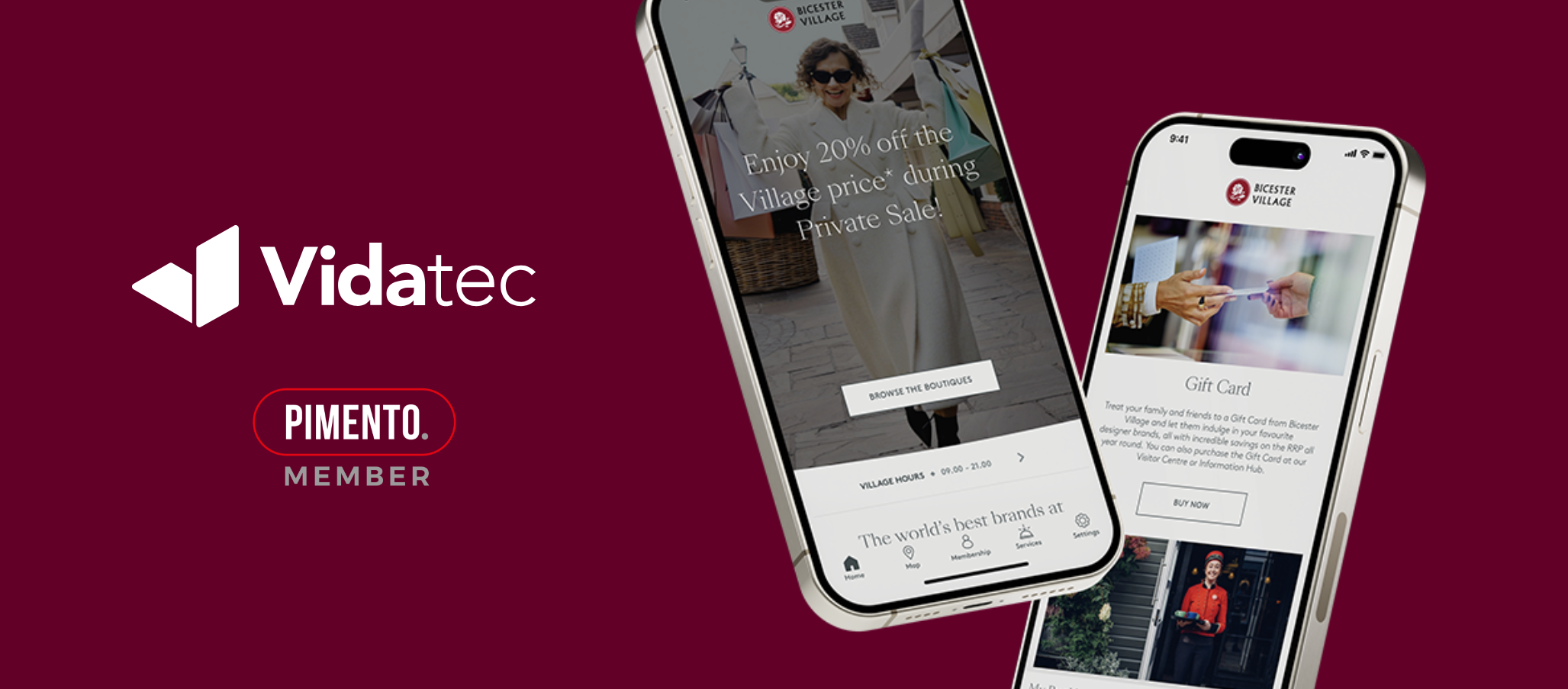Playbook for Luxury Marketing in 2026: Tradition, Tech & the TikTok Generation
Luxury marketing in 2026 is being pulled in two directions at once.
On one side: heritage, craftsmanship, scarcity, discretion.
On the other: TikTok trends, AI-powered personalisation, social commerce, and a generation that spends differently and expects brands to get them.
At Pimento’s recent “Luxury Without Limits” webinar, marketing leaders from Walpole, Fortnum & Mason and LONDON.ai painted a very clear picture: the levers of luxury haven’t fundamentally changed – but how you pull them absolutely has.
Below is a practical playbook for luxury marketing in 2026, drawing on that discussion and the latest market shifts.
1. From “expensive” to “worth it”: redefining value
If there’s one idea to retire in 2026, it’s the lazy equation of “luxury = high price”.
As Crispin Butler (Director of Marketing and Communications at Fortnum & Mason) put it, discard expense and keep value. The new value equation looks more like this:
- Quality first – best-in-class materials and execution, never “value-engineered” down.
- Emotional payoff – how it makes you feel, not what it costs.
- Context & story – where you bought it, who helped you choose it, what it represents.
- Longevity – “quality is always cheapest in the long run” still holds.
Quiet luxury – craftsmanship, longevity and understatement – isn’t a passing trend; it’s the visible expression of a deeper shift. Younger customers are happy with “affordable luxuries”: the perfect drink, the right bottle, the best ingredients – if the experience around them justifies the premium.
For luxury marketing in 2026, that means:
- Stop leading with price as a proxy for status.
- Start telling richer stories about quality, origin, craft and feeling.
- Treat every product, even entry-level, as a proof point of your standards.
2. The TikTok generation: less, better, smarter
Gen Z and younger Millennials are reshaping luxury demand – but not in the simplistic “they only want streetwear” way.
From the webinar panel:
- They drink less but better – moderation, with “new hedonism” when they do splurge.
- They expect authenticity, creativity and emotional connection as standard.
- They love luxury, but want it on their terms: sustainable, culturally fluent, inclusive.
- They are obsessive researchers – deep dives into brand history, vintage collections, materials and provenance.
In other words, they’re not rejecting tradition – they’re interrogating it.
So what does that mean for luxury marketing in 2026?
- Build brand worlds, not just products. Give them a universe to immerse in – stories, rituals, behind-the-scenes content, smart collabs.
- Respect their intelligence. Offer knowledge: masterclasses, talks, deep content, not just lookbooks.
- Design for “show-and-tell”. They will share the things that make them look discerning, not just rich.
3. Experience is the product (and the product is the souvenir)
One theme came up again and again: in modern luxury, the experience is the main event; the product is the takeaway.
Think about:
- Fortnum & Mason’s jam example – it’s not just what’s in the jar; it’s the Christmas windows, the red-coated staff, the double-helix staircase, the unexpected glass of champagne on a rainy day.
- The Macallan’s distillery – a “temple” to the brand where architecture, storytelling and place come together.
- Supper clubs, tastings, talks, workshops – intimacy, access, learning and theatre.
For high-net-worth and ultra-high-net-worth audiences, the direction of travel is clear: money-can’t-buy experiences over more “stuff”.
For luxury marketing in 2026, that means:
- Ask, “What is the signature experience our brand is famous for?” If you don’t have one, that’s a priority.
- Design tiered experiences – from open, discoverable moments (sampling, in-store theatre) to highly curated, invite-only events.
- Reframe product launches as chapters in an ongoing story, anchored by physical or digital happenings.
Crucially, experiences don’t have to be extravagant to be effective. Tiny moments of recognition – using someone’s name, remembering a preference, offering a small but thoughtful gesture – create the kind of memories that social posts and dinner-party stories are made of.
4. Tech & AI: invisibly powerful, never the star
AI is racing into the luxury space, but the panel was crystal clear on one point: technology should empower human luxury, not replace it.
Good uses of AI and data in luxury marketing in 2026:
- Hyper-relevant service, invisibly delivered
- Remembering room preferences across hotel locations.
- Predicting likely needs based on stay history or purchase behaviour.
- Surfacing the right products or experiences at the right moment.
- Freeing humans to be more human
- Automating routine tasks (e.g. newsletter production, basic queries).
- Redeploying staff into high-touch clienteling and service roles.
- Enhancing trust and authenticity
- Supply-chain transparency.
- Authenticity verification for high-value goods.
Bad uses of AI:
- Replacing human hosts, concierges, waiters and sales associates with bots.
- Letting generative tools produce off-brand, generic creative.
- Overstepping on privacy with “creepy” personalisation.
For luxury brands, the litmus test for tech in 2026 is simple:
Does this make the customer feel more recognised, understood and cared for – or more processed?
If it’s the latter, it’s not luxury.
5. Influencers, TikTok and the new power of endorsement
Celebrity and influence are not going away – but their role in luxury marketing in 2026 is more nuanced.
Key shifts:
- The brand must remain the star. If people remember the celebrity and not the house, you’ve lost.
- Authentic fans > guns for hire. Mandarin Oriental’s long-running “Fan” campaign worked because the famous faces were genuine admirers, not a media buy.
- Micro-moments can explode small brands. A single outfit on a hit show or a royal appearance can transform a fledgling label’s fortunes overnight.
- Influencers are culture translators, not just reach machines. Particularly in markets like China, they’re crucial to making brands locally relevant.
The risk: misalignment and loss of control. Once your brand is in someone else’s hands, their misstep becomes your headline.
So for influencer and TikTok strategy in 2026:
- Build a clear framework of brand values and “red lines” (what’s never OK).
- Choose partners whose own story genuinely intersects with your brand’s.
- Think long-term, relationship-based collaborations over quick-hit drops.
- Use social to lift the curtain – show process, people, craft, knowledge.
6. Global brands, local realities
One of the hardest jobs in luxury marketing is ensuring that a brand feels:
- Consistent and recognisable in London, Shanghai and Riyadh…
- …while also being relevant and respectful to local culture, channels and behaviours.
The Macallan example shows what “good” looks like:
- A tight, non-negotiable core story – Sherry oak mastery, full control of the supply chain from Spanish forest to Speyside maturation, incomparable craftsmanship.
- An “army of advocates” – brand ambassadors, educators, trade partners trained to tell that story in their own words.
- Flexibility in execution – different serves, events, partnerships and content by market, all rooted in the same DNA.
For luxury marketing in 2026, global/local excellence demands:
- Investing in education – not just sales scripts, but deep understanding of what makes your brand truly different.
- Empowering markets to adapt the “how” without changing the “why”.
- Listening to local teams and consumers to keep the brand culturally fluent.
7. Sustainability, longevity and trust
By 2026, sustainability in luxury is no longer a nice differentiator; it’s the entry ticket to credibility.
But the luxury lens on sustainability is distinctive:
- Longevity as virtue. Products designed to last – to be repaired, resold, passed down – are both sustainable and deeply luxurious.
- Craft and local production often come with lower environmental impact and higher social value.
- Radical transparency (materials, sourcing, labour, packaging) builds trust with highly informed buyers.
The communication challenge is avoiding greenwashing. That means:
- Talking about specific, measurable actions, not vague commitments.
- Being honest about where you are on the journey, not at the finish line.
- Connecting sustainability to brand truth – not bolting it on.
Done well, sustainability reinforces the timelessness, quality and care that luxury has always claimed to stand for.
8. The new luxury playbook: 7 principles for 2026
To pull it together, here’s a concise playbook for luxury marketing in 2026:
- Know exactly who you are.
- Lock your brand codes, DNA and non-negotiables.
- Collaborate widely, but never dilute them.
- Optimise for desire, not just growth.
- Protect scarcity and mystique.
- Say no to volume plays that commodify the brand.
- Make experience your core product.
- Design signature rituals, spaces and moments.
- Let the physical or digital product be the souvenir of a story.
- Use tech to amplify humanity.
- AI and data should make human service more personal, not vanish it.
- Keep the “magic” invisible; let people remember the feeling, not the system.
- Treat customers as discerning equals.
- Exchange knowledge, not just messages.
- Invite them into the brand’s thinking, craft and community.
- Balance generations – and wallets.
- Court younger audiences with access points and experiences.
- Never neglect the older, high-value clients who drive most of the revenue.
- Measure value beyond the spreadsheet.
- Track equity, advocacy, lifetime relationships, not just quarterly sales.
- Remember: in luxury, brand damage is far more expensive than missed short-term growth.
Final Thought
Luxury marketing in 2026 isn’t about choosing between tradition and TikTok, or between craftsmanship and code. The winning brands will be those that:
- Guard their heritage fiercely,
- Embrace technology intelligently,
- And show up on the platforms of the TikTok generation without pretending to be something they’re not.
If you can make a customer feel recognised, respected and rewarded at every touchpoint – from a ‘For You’ page scroll to a flagship store visit – then the future of your luxury brand looks very bright indeed.
If you’d like support shaping your luxury strategy for 2026 and beyond, we’d love to help.
Get in touch with the Pimento team to explore how our network of specialists can help you elevate your brand, your experience and your growth.

Digital by Design: The Next Chapter in Luxury Marketing
Luxury has always been about emotion. It’s about how a person feels when they interact with a brand, whether in […]
Read more.
In Uncertain Times, a Strong Reputation is Your Strongest Asset
Businesses around the world are navigating a period of intense uncertainty. Global tariffs, rising geopolitical tensions and the looming threat […]
Read more.
